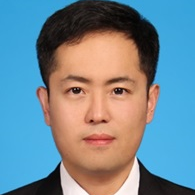Application of Multifunctional Materials in Water Treatment
A special issue of Applied Sciences (ISSN 2076-3417). This special issue belongs to the section "Environmental Sciences".
Deadline for manuscript submissions: closed (30 April 2023) | Viewed by 8672

Special Issue Editors
Interests: functional material; water treatment; adsorption; advanced oxidation; membrane filtration; process design; applications; coupling systems
Interests: AOPs; wastewater treatment; micro-pollutants; environmental decontamination
Special Issues, Collections and Topics in MDPI journals
Interests: environmental nanotechnology; electrochemistry; advanced oxidation technology
Special Issues, Collections and Topics in MDPI journals
Special Issue Information
Dear Colleagues,
This Special Issue is devoted to applications of multifunctional materials in water treatment. Environment functional material has played an important role in water treatment including organic and inorganic contaminants removal. Novel adsorbents, catalysts and membranes are welcomed for water treatment. Accordingly, the adsorption, advanced oxidation and filtration systems will be considered in this issue. The preparation methods, performance of multifunctional materials and related mechanism for wastewater remediation will be discussed. Moreover, the process design is crucial for the practical applications of multifunctional materials in water treatment. In particular, the coupling systems of any two technologies are of interest. This Special Issue will publish communications, full text papers and criticle reviews.
Dr. Ning Li
Dr. Xiuwen Cheng
Dr. Yanbiao Liu
Guest Editors
Manuscript Submission Information
Manuscripts should be submitted online at www.mdpi.com by registering and logging in to this website. Once you are registered, click here to go to the submission form. Manuscripts can be submitted until the deadline. All submissions that pass pre-check are peer-reviewed. Accepted papers will be published continuously in the journal (as soon as accepted) and will be listed together on the special issue website. Research articles, review articles as well as short communications are invited. For planned papers, a title and short abstract (about 100 words) can be sent to the Editorial Office for announcement on this website.
Submitted manuscripts should not have been published previously, nor be under consideration for publication elsewhere (except conference proceedings papers). All manuscripts are thoroughly refereed through a single-blind peer-review process. A guide for authors and other relevant information for submission of manuscripts is available on the Instructions for Authors page. Applied Sciences is an international peer-reviewed open access semimonthly journal published by MDPI.
Please visit the Instructions for Authors page before submitting a manuscript. The Article Processing Charge (APC) for publication in this open access journal is 2400 CHF (Swiss Francs). Submitted papers should be well formatted and use good English. Authors may use MDPI's English editing service prior to publication or during author revisions.







